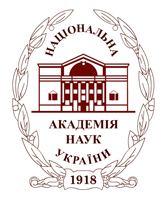 bv.nbuv.gov.ua
bv.nbuv.gov.ua
ISSN 1029-7200 (print)
ISSN 2948-0183 (online)
Bibliotechnyi visnyk
ARCHIVE (All issues) / ![]() Content (2021, Issue 2)
Content (2021, Issue 2)![]()
![]()
Kubko Anastasiia Scientometric Dimensions of Epidemic: Part Three. Features of the COVID-19 Pandemic in UkraineSection: Libraries in the digital environment Abstract: The relevance of research. The COVID-19 pandemic allowed world experts in scientometrics and bibliometrics, in addition to verifying the main trends of the pre-COVID-19 era and identifying new trends, to confirm the presence of errors in certain trends, are associated with the reflection of the characteristics of only the affected regions. The aim of the study is to identify trends in the academic response of the medical industry of Ukraine to the stress caused by COVID-19 pandemic and to check their compliance with global trends. Results. The study has been conducted on the publication activity of leading by Hirsch index Ukrainian scientists from certain medical sectors, which, according to numbers of foreign researches, had been affected by the COVID-19 pandemic most. The database "Bibliometrics of Ukrainian Science", the national segment of Google Scholar, has been used; the coverage period - 01.2020-11.2020, plus a separate study of the publishing activity of the top-100 (by the Hirsch index) scientists from public health sector of medical sciences from the above stated up to 23.11.2020. Basing on the results of the obtained data, the following trends are determined: the academic response of Ukrainian medical industry during the first half of the year was low, compared to the global one, although in general it retained its main features (overall increase in the number of publications, intra-industry distribution of publications, maximization of publication activity in the sectors with the greatest burden of novelty, the lack of coverage of publications by indexing). Local features of the academic stress response in Ukraine are as follows: publication leadership in sectors that combine the load of novelty with greater research opportunities; the lack of leadership in the study period in the sector of health care; and the overall growth of publishing activity in the second half of 2020. Among the scientific institutions and organizations that have dealt with the problem of COVID-19, leading in the number of both publications and authors of publications, is the P. L. Shupyk National Medical Academy of Postgraduate Education. Conclusions. Possible reasons for the inconsistency of local trends with the global ones may be as follows: the late onset of the COVID-19 pandemic and the smaller number of patients in Ukraine, which did not permit a large-scale research in the first half of the year; publication of materials in health care-topic in non-indexed form and sources, and by authors by authors who mostly did not get into the top-10 groups of scientists, included in actual research. It should also be noted that the analysis of the publishing activity of only top-10 (by h-index) scientists is more likely not to give a complete bibliometric and scientometric picture of the changes taking place, so further research is needed, which would cover a longer period of time and include more scientists. Keywords: scientometrics, bibliometric indicators, Hirsch index, medicine, COVID-19. Author(s) citation:
Cite: References:
|